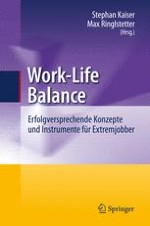2010 | OriginalPaper | Chapter
Work-Life Balance in Professional Service Firms
Authors : Stephan Kaiser, Cornelia Reindl, Martin L. Stolz
Published in: Work-Life Balance
Publisher: Springer Berlin Heidelberg
Activate our intelligent search to find suitable subject content or patents.
Select sections of text to find matching patents with Artificial Intelligence. powered by
Select sections of text to find additional relevant content using AI-assisted search. powered by
